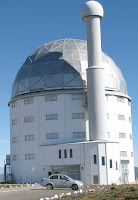


That was the theme of the talk given by the senior research manager at the Mammal Research Institute of the University of Pretoria to a capacity crowd at West Coast Fossil Park (both allied to Iziko Museum) on 3 June.
Based in Cape Town (there are no whales and dolphins in Gauteng, guys!), Meredith Thornton dropped everything to keep that appointment as well as the mass strandings workshop that she led the next day. No need to go into the incident that took place at Kommetjie on Saturday May 30th for you to understand that I do mean dropped, such is her dedication to the task at hand and her love for these mammals of the sea.
The workshop had been six months in the planning and its ultimate timing with Saturday’s mass stranding is an unfortunate coincidence, but one where everyone learned a bit more about how to deal with events of this nature, especially in St Helena Bay where Doctor Reef is a notorious ‘hotspot’ for mass strandings.
Oceana (St Helena Bay) hosted the workshop – thank you to site manager Titania Stefanus Zincke - which was attended by some 40-plus delegates representing MCM, SAPS, NSRI, MCS (marine compliance) and the private sector.
In addition to the theoretical side Meredith led the group down to the beach where she put us through a practical simulated exercise using blow-up dolphins. There were crowd controllers (Sgt. van Rooy from MCS Saldanha Harbour and Wally Cockrell from MCM Lambert's Bay) who unceremoniously (but in good fun) tumbled harasser Darryl Hess onto the other side of the cordon while the inevitable heckler shouted, “You don’t know what you’re doing”; and, aided by the Water Wings unit and MCS, NSRI officials carried out their role in trying to cope with well-meaning but ignorant onlookers.
In talking to Meredith, whose stay I had the privilege of hosting at Dolphin B&B+S/C, what has hit home to me personally is the love that she and her co-workers have for the creatures that they study and the pain they will have felt at having to reach the decision that they did. Does anyone stop to think about that? I have me doots.
So, to all - from Nan Rice of DAPG, who so calmly and efficiently handled the call for assistance, to Mike Meyer et al - a round of applause for a terrible job well handled. And, Meredith, the training you gave us will hold us in good stead in the event of yet another mass stranding at Doctor Reef in St Helena Bay. May it never happen.



